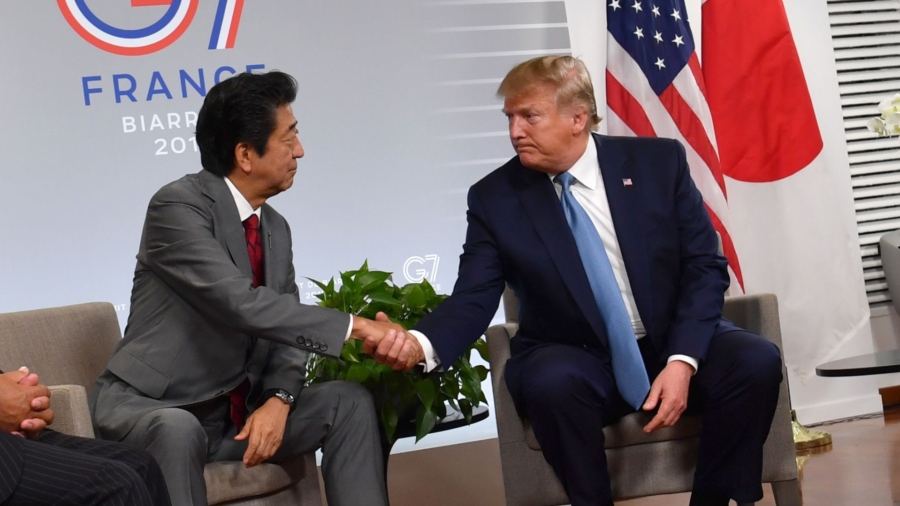The United States and Japan reached an agreement on the core principles of a trade deal during the G7 summit in France on Aug. 25.
President Donald Trump and Japanese Prime Minister Shinzo Abe announced the agreement to reporters in Biarritz, France. Trump said the two nations agreed to “every point” of the deal. The two leaders said they plan to sign the formal agreement on the sidelines of the United Nations General Assembly in New York in late September.
“This is a tremendous deal for the United States,” Trump said.
“If we are to see the entry into force of this trade agreement, I’m quite sure that there will be the immense positive impact on both the Japanese as well as American economies,” Abe said.
According to U.S. Trade Representative Robert Lighthizer, the deal includes agreements in the areas of agriculture, industrial tariffs, and digital trade.
Lighthizer said the deal will impact roughly half of the $14 billion in agricultural products Japan imports every year. The deal will benefit American producers of beef, pork, wheat, dairy, wine, and ethanol, Lighthizer said. Japan also agreed to buy an excess of American corn resulting from the trade war with China. Abe said Japan is dealing with the impact of insect pests on crops which are forcing the private sector to look for additional product overseas.
“It will lead to substantial reductions in tariffs and non-tariff barriers across the board,” Lighthizer said.
“And I’ll just give you one example: Japan is, by far, our biggest beef market. We sell over $2 billion worth of beef to Japan. And this [will] allow us to do with lower tariffs and to compete more effectively with people across the board, particularly the TPP countries and Europe.”
Trump told reporters that tariffs on Japanese car imports will remain the same.
Lighthizer called the digital and e-commerce part of the deal “the gold standard of an international agreement.”
Trump and Abe announced they were working on a trade deal in September last year. Lighthizer and Japanese Minister Toshimitsu Motegi have been negotiating since. They presented the terms of the deal to Trump and Abe during the G7 summit and received approval from both leaders. Over the course of the next month, the two sides will set the terms of the deal on paper.
“So the key mission for both myself and Ambassador Lighthizer is to complete the remaining work as soon as possible,” Motegi said.
Japan is the third-largest economy in the world in terms of total gross domestic product. In 2018, U.S. exports to Japan totaled $120 billion; imports totaled $177 billion. Japan is the fourth largest export destination for the United States.
The biggest U.S. exports to Japan in 2018 were mineral fuels, machinery, optical and medical instruments, aircraft, and electrical machinery. The United States imports products from similar categories from Japan.
“The significance of this achievement cannot be over-emphasized,” Montegi said.
From The Epoch Times


